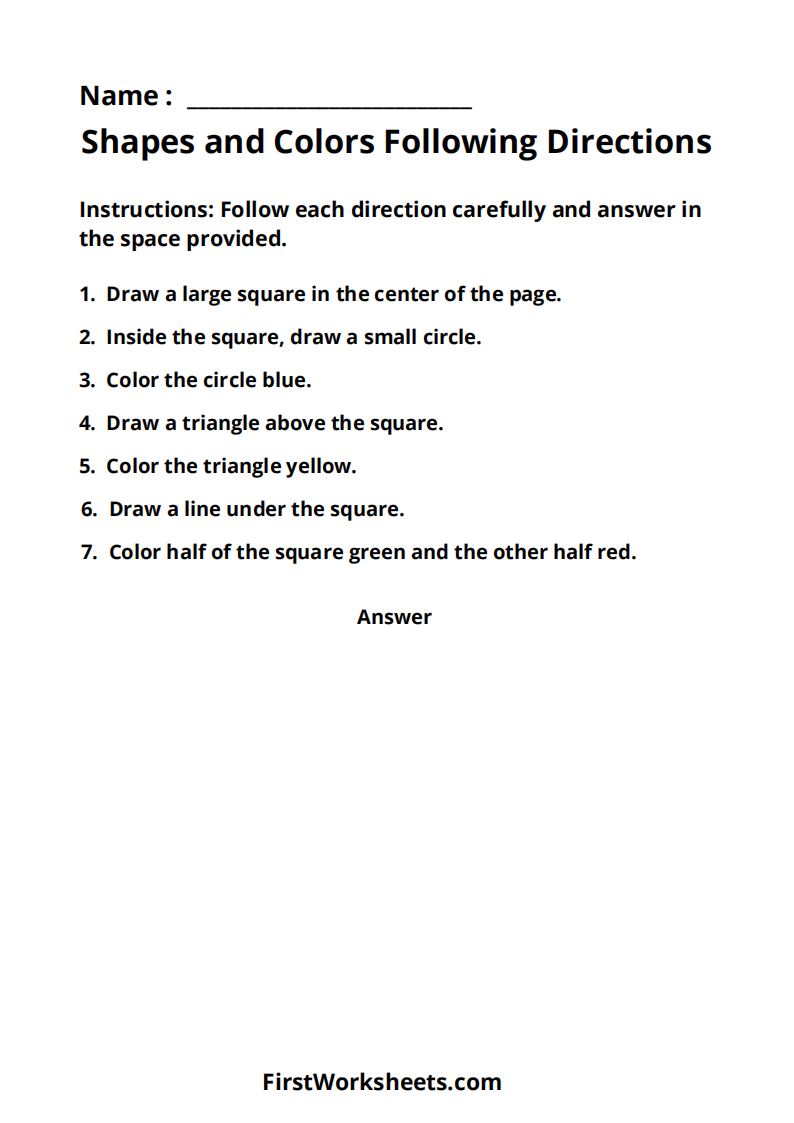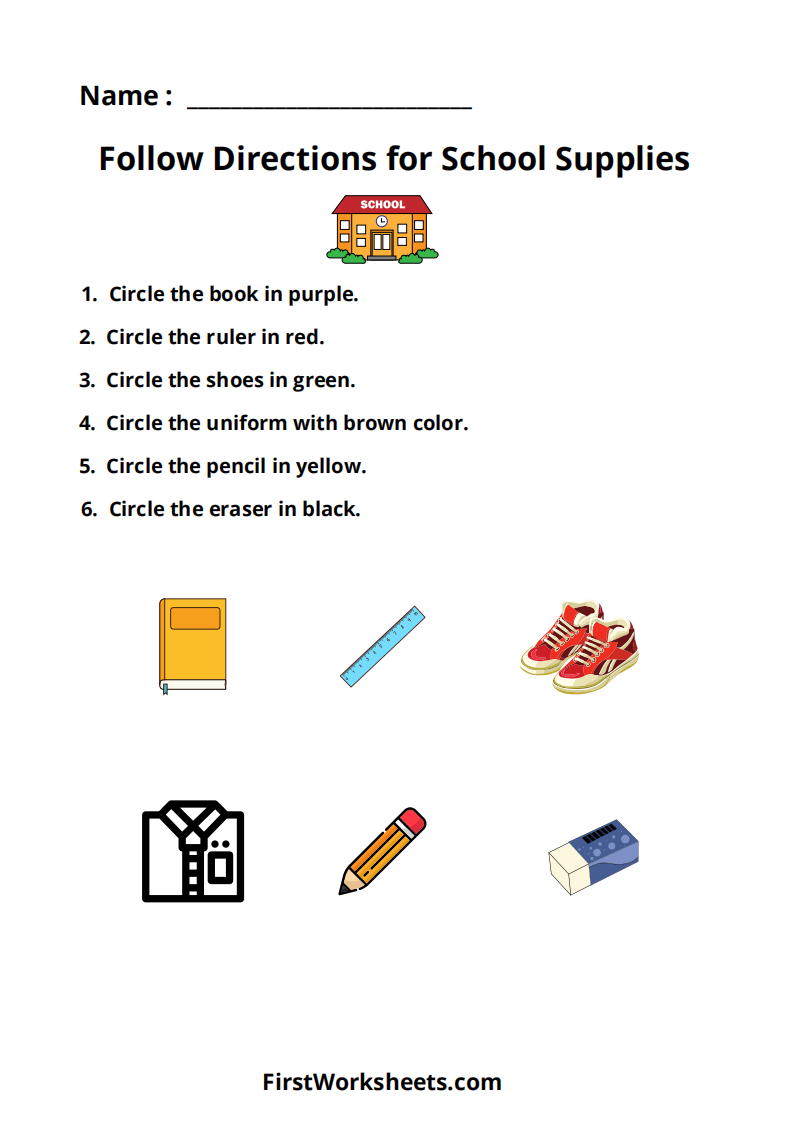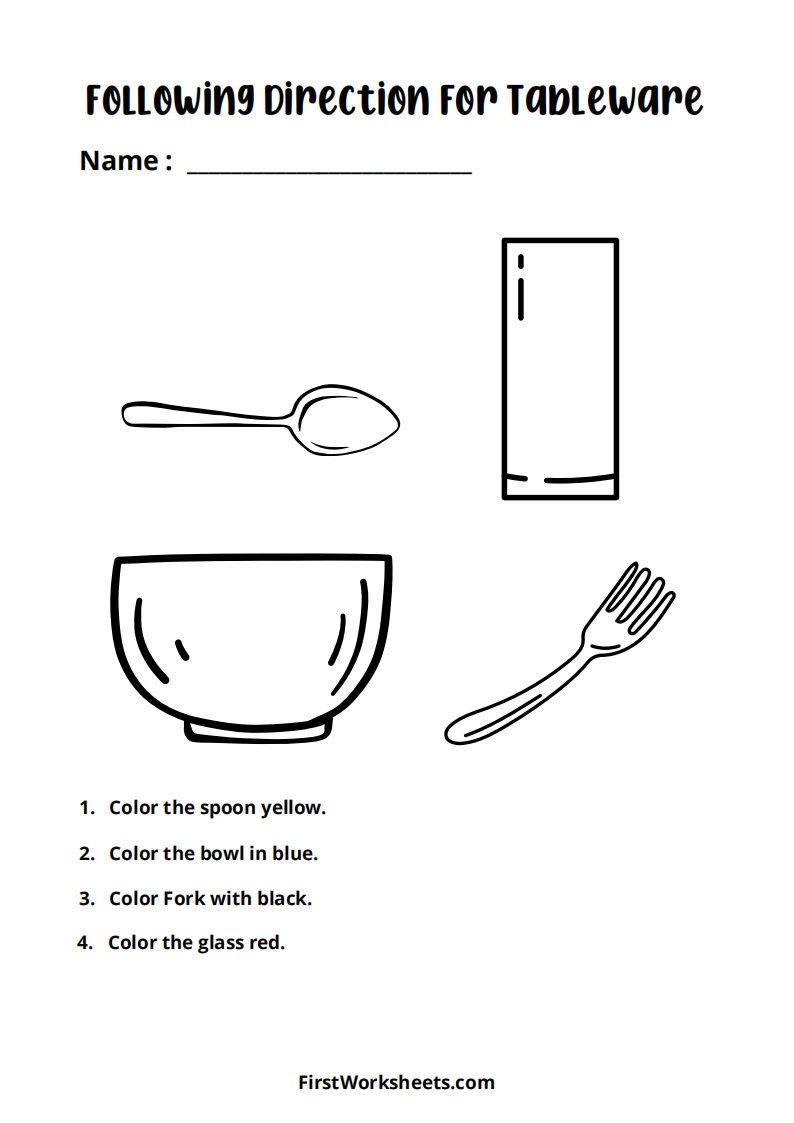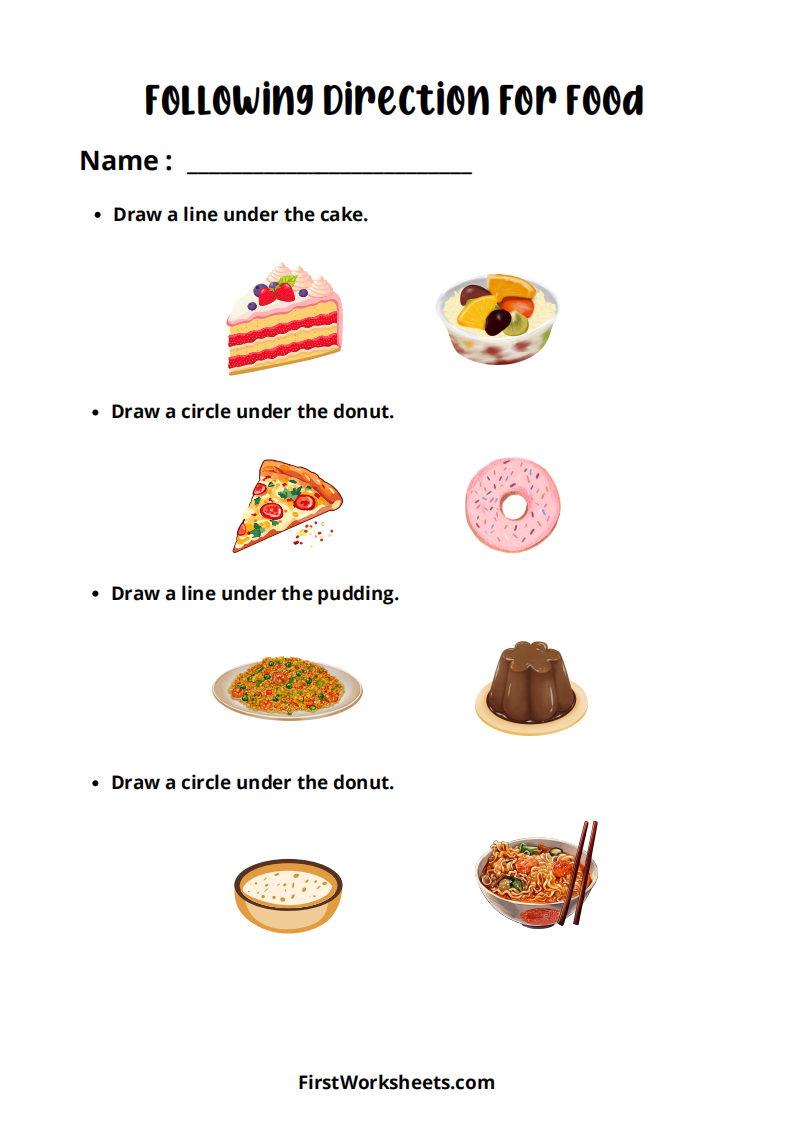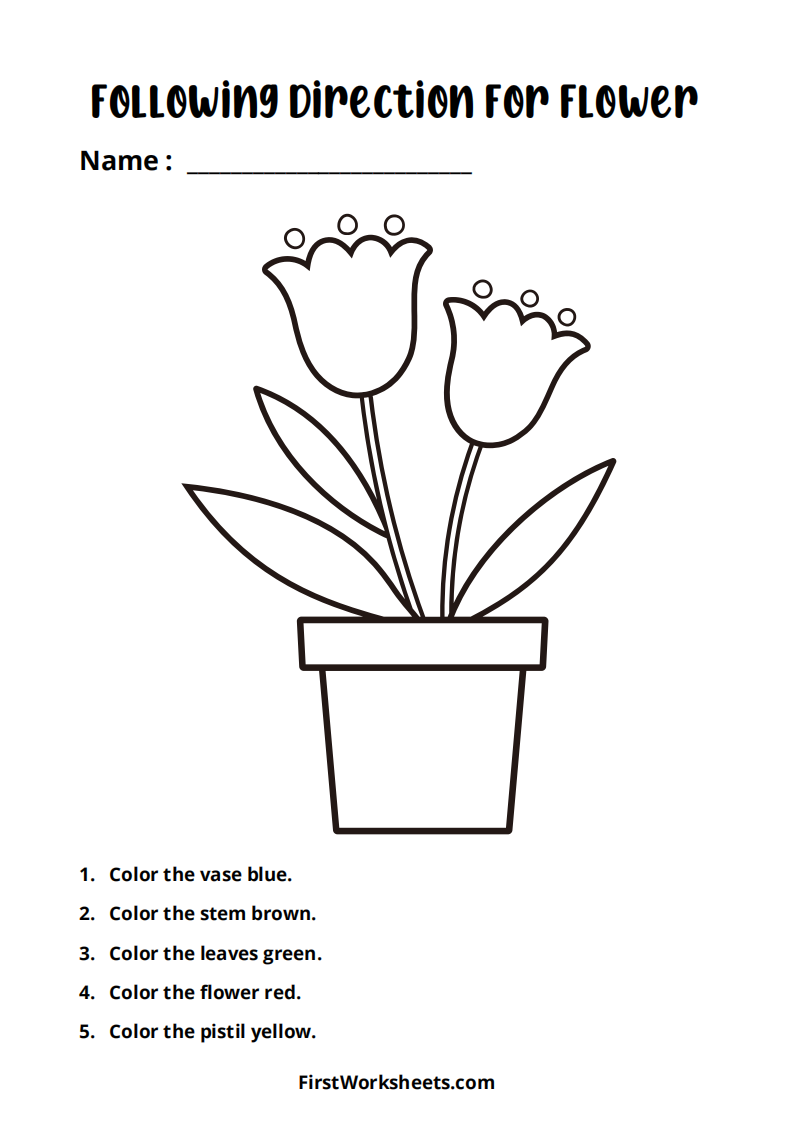Following Directions WorksheetsFollowing Directions Worksheets
In the formative years of a child’s education, the ability to follow directions is a fundamental skill that lays the groundwork for academic success and social development. Kindergarten is a crucial period where children transition from the relatively unstructured environment of home or preschool to the more structured world of formal education. One of the most effective tools in helping young learners develop this essential skill is the use of following directions worksheets. These worksheets are more than just simple exercises; they are carefully designed activities that enhance cognitive development, listening skills, and the ability to execute tasks correctly.
Why Following Directions Matters in Kindergarten
Following directions is a multifaceted skill that touches on various aspects of a child’s development. In kindergarten, this skill is particularly significant for several reasons:
- Cognitive Development: Following directions involves understanding and processing information, which are key components of cognitive development. As children engage with worksheets that require them to follow steps, they are practicing how to sequence tasks, recognize patterns, and solve problems.
- Listening Skills: Kindergarten is a time when listening becomes a critical part of the learning process. Directions are often given verbally by teachers, and worksheets reinforce the importance of listening carefully to instructions before beginning a task.
- Social Interaction: In a classroom setting, following directions is essential for group activities, collaborative projects, and maintaining order. Children who can follow directions are better equipped to interact positively with their peers and teachers.
- Preparation for Future Learning: The ability to follow directions is foundational for more complex tasks in later grades. It prepares children for following multi-step instructions in subjects like math, science, and reading comprehension.
Types of Following Directions Worksheets
Following directions worksheets for kindergarten are diverse and cater to different aspects of learning. Here are some of the most common types:
- Simple Step-by-Step Instructions: These worksheets typically involve tasks where children must follow a sequence of actions, such as coloring a specific part of a picture, cutting out shapes, or placing objects in a certain order. These activities help children practice sequencing and motor skills.
- Listening and Responding: Some worksheets require children to listen to instructions given by the teacher and then perform the task on the worksheet. This type of activity strengthens auditory processing and attention to detail.
- Matching and Sorting: Worksheets that involve matching or sorting based on directions help children develop categorization skills. For instance, a worksheet might instruct a child to match items that belong together or sort objects by size or color.
- Directional Tasks: Worksheets that involve following spatial directions, such as “draw a line above the square” or “circle the object to the right of the triangle,” help children understand positional concepts and improve spatial awareness.
- Multiple-Step Instructions: As children become more proficient, worksheets can introduce tasks that require following multiple steps in a specific order. These are particularly useful in developing executive function skills, such as planning and organizing.
Benefits of Using Following Directions Worksheets
- Enhanced Focus and Attention: Regular practice with following directions worksheets helps children learn to focus on a task and pay attention to details. This improved concentration is vital for success in all areas of learning.
- Improved Fine Motor Skills: Many following directions worksheets involve activities like coloring, cutting, or tracing, which help strengthen fine motor skills. These are essential for writing, drawing, and other hands-on activities.
- Boosted Confidence: Successfully completing tasks on these worksheets gives children a sense of accomplishment. This boosts their confidence and encourages a positive attitude towards learning.
- Reinforcement of Concepts: These worksheets often integrate other learning concepts, such as colors, shapes, numbers, and letters. This reinforcement helps solidify foundational knowledge in a fun and engaging way.
- Assessment Tool: Teachers can use following directions worksheets as an informal assessment tool to gauge a child’s understanding of instructions and their ability to execute tasks independently.
Following directions worksheets are an indispensable tool in the kindergarten classroom, offering far-reaching benefits that extend beyond simple task completion. They play a critical role in developing cognitive abilities, listening skills, and social interaction, all of which are essential for a child’s educational journey. By carefully selecting and implementing these worksheets, educators can create a structured yet engaging learning environment that sets the stage for future academic success.
Incorporating these worksheets into daily routines not only prepares children for the challenges ahead but also instills a sense of achievement and confidence, ensuring that they are well-equipped for the next steps in their educational journey.
